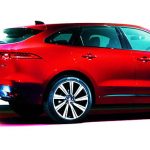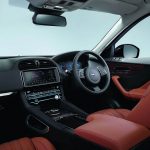
Great Drives: Honda Civic Type R FD2. It’s a saloon that thinks its a 911 GT3. The result is a car that could be the best Type R of them all. Think you know about Honda Civic Type R. We drive the FD2, the hot hatch that’s actually a saloon. It might just be the best of the lot. Words Chris Chilton. Photography Reach Pearce.
Say hello to the Honda that thinks it’s a 911GT3
SUSPENDED ANIMATION Could the FD2 Type R be the best of the breed?
DRIVING Could the FD2 Civic Type R be the best of Honda’s special breed? We send Chris Chilton to 8000rpm and beyond to test the theory.
75 UK cars (est)
What to pay
Concours £20,000
Good £15,000
Usable £10,000
Project £8000
Sometimes you meet a car that turns everything you thought you knew about the model on its head. The 2006-2011 FD2 Honda Civic Type R is the perfect case in point, a Matrix moment on four wheels, at least for Brit hot hatch drivers.

Back in 2006 Honda’s Swindon plant was starting to churn out the all-new Civic Type R hot hatch. It featured the latest FN2-generation hatchback Civic’s sci-fi styling, but the familiar high-revving, naturally-aspirated 2.0 was perhaps too familiar given that it put out precious more power to offset the bigger car’s fuller waistline.
‘IT MIGHT BE A SALOON BUT IT CLEARLY THINKS IT’S A 911 GT3’
But over in Japan it was a very different story. Instead of offering CTR fans a new hot hatch, Honda served up a four-door saloon, one the spec sheet suggested was a whole lot more serious about its performance game.

This FD2 Civic Type R was never officially sold here, but the word is it’s worth every penny of the many it costs over its FN2 UK cousin.
Join us as we grab a set of keys – and a red pill – to find out about CTR life beyond the FN2.
‘IT’S A CONCENTRATED HIT OF B-ROAD AND TRACK-DAY ADRENALINE THAT HAPPENS TO HAVE ROOM FOR FOUR’
It’s not strictly correct to say we didn’t get the FD2 in the UK, though it’s quite possible you’ve never seen one. Because the only variant of the Japanese-built four-door Civic sold officially through UK Honda dealers was the little-known – and of little interest to us, because when it comes to driving, stuffing a nail into a wall is more exciting – Civic IMA hybrid.
The car we’re driving today, courtesy of Devon-based import specialists Torque GT, is definitely of interest. Fresh off the boat from Japan, and so clean it looks like it’s fresh from the factory, rather than nearly a decade old, it’s simply stunning. But that wow is all down to the condition and the detailing: the gorgeous Championship White paint, the high-rise hoop perched on the rear boot lid, those stirring Enkei rims and the way the lowered suspension pulls the body down tight over them. Because when you look past the baubles, the FD2 itself is a very plain three-box saloon.
And that contrasts starkly with the FN2 we got in the UK. A brilliantly bold bit of design, the FN2 looked like a futuristic fighter pilot’s helmet and featured more triangle motifs than an Egyptian Toblerone billboard ad. Britain’s Pensioners must have thought they’d woken from a 50-year cryogenic sleep when they walked into their Honda dealership in the mid-00s.
‘AT 5800RPM, YOU’RE TRANSPORTED RIGHT INTO A YO VTEC! MEME’
Inside, it’s a similar story. The saloon FD2’s dash, with its multi-level mix of analogue and digital instruments, looks outlandish compared to contemporary, conservative European stuff like the MkII Focus, but noticeably less weird than the hatchback FN2’s.
There’s plenty to make UK CTR fans feel at home, though. Drop into the immaculately well preserved Alcantara seats and apart from the windscreen base being so far away you’d need one of those litter-collecting claws to retrieve a stray pay-and-display ticket, the driving position feels instantly right: aluminium-topped shift ball a short stretch away; smart set of aluminium pedals under your feet. Get the wheels rolling and you’re immediately struck by how light the FD2 feels on its feet. The gear-change is snicksnick perfect and the engine adds revs cleanly and effortlessly, the noise a slightly strained growl that hints at what’s to come But when is it going to come? While the UK-spec FN2’s K20Z4 2.0-litre twin cam made 198bhp and 142lb-ft, the JDM FD2 put out a stomping 221bhp and 159lb ft courtesy of its K20a, thanks to goodies like high compression pistons.
Sounds strong on paper, but there’s no getting away from… well, anything at all unless you use all of the 8600 available revs (compared with 8200rpm for the FN2). Plant your foot down at 4500rpm in fourth gear, exactly the point at which an Impreza or Evo would erupt down the road in a forced induction frenzy, and you get a bit more noise and not much of anything else. So far it feels like an BMW E30 M3: sweet, but slow.
And then suddenly, at around 5800rpm, you’re transported right into the middle of one of those Yo VTEC! memes. A polite little VTEC light illuminates on the dash, while a very rude engine assaults every one of your senses and the air in its path. Now your sweet little four-door saloon is making a noise like a full-on touring car, and you’re frantically throwing gears at it to keep the rev needle from trying to introduce itself to the number nine on the dial. Suddenly your underpowered hot hatch-cum saloon feels properly brisk and you desperately want to hunt out some deserted road so you can batter it between its VTEC switchover point and the redline again and again.
A decade ago an engine with this kind of character already seemed slightly special. But now, in an era of homogenised turbo power, it’s almost hard to believe we ever had cars so raw, so… exciting.
But this spectacular drivetrain is only part of the appeal. A UK spec FN2 already does much of the same job, and a few choice induction and exhaust mods plus some ECU massaging would give you most, if not quite all of the same buzz. But they won’t be able to replicate the way this car feels.
Because while the FN2’s styling was miles ahead of the FD2’s and the previous bread van EP3’s in terms of emotional appeal, under the skin, things weren’t so clear cut. If the FN2’s design was firing hot hatch fans into the future, its chassis was dragging them in the opposite direction, and not because it was heavier than both its predecessor and its saloon alter ego.
The very first EK9 Civic Type R of 1997 featured double wishbones up front and a multi-link rear, but by the time the EP3 arrived in 2001 the front suspension had been swapped for cheaper, inferior MacPherson struts. With the FN2, Honda had replaced the rear multi-link rear with a simple torsion beam.
But the FD2 saloon stuck with the multilink rear meaning it was dragging less unsprung mass and each rear wheel could react more appropriately to changes in the road surface.
That should mean greater refinement and more control but the FD2’s more aggressive spring and damper rates means it feels busy on less than smooth roads. There’s no doubt the FN2 would be easier to live with on a long journey or day to day. But the FD2 wasn’t built for grinding along motorways. It might be a Japanese saloon but it clearly thinks it’s a 911 GT3, and on these country roads, it’s almost as much fun to beast. Maybe more so, because you can thrash it more of the time.
Whether you’re on the gas, on the middle pedal working those Brembo calipers, or leaning on the Dunlop Direzzas and feeling the standard limited-slip diff – a piece of kit the FN2 didn’t get until 2009 – help you claw your way round every corner, the Type R feels absolutely in its element.
And even without an FN2 here for comparison, you can tell it’d be quicker across country. In an episode of Fifth Gear from the mid ‘00s Vicki Butler Henderson pitted FN2 against FD2 around a wet Castle Combe race circuit and found the JDM car 3sec quicker.
For me though, the bigger improvement, and one you can appreciate at all speeds, not just running full chat, is one you feel through your hands, not the seat of your pants. While the FN2 followed the precedent set by the EP3, going for an electrically assisted steering rack, the FD2 got old-fashioned, and much more feelsome, hydraulic steering.
It’s not true to say that all electric steering is bad and all hydraulic, good – there are so many other factors at work here. But in this case the FD2’s steering communicates messages from the front wheels far more transparently. And on a driver’s car, that communication is absolutely crucial.
That purity of connection sums this Civic up. There’s a sincerity to the FD2 Type R not all fast cars can claim. There are no gimmicks, no ‘sport’ buttons, no multi-setting dampers, no fake sound effects. It doesn’t make any pretence at being the perfect all-rounder in the manner of a Golf GTI.
Today, that purity of purpose is one of the reasons FD2s are rare and highly prized here in the UK.
While you can pick up an FN2 for less than £3k, FD2s seem to be stubbornly refusing to drop below ten.
In Type R land four doors aren’t dull. More wing than a KFC ‘meal’. If you don’t hit at least 8k you’re not trying hard enough. Hydraulic rack = horny in the bends. Interior is less bonkers than FN2 Civic. Recaros grip like a baby at ‘lunch’. Close-ratio box is super smooth. FD2 packs more horses than FN2. Front LSD rips through corners.
The Modern Classics view
It’s easy to get carried away wondering what might have been had Honda Europe chosen to use the same engine, steering and suspension philosophy as its Japanese colleagues.
The result would have been more exciting to drive than the FN2 we did get, but it also would have upped the cost and killed the refinement, meaning it probably wouldn’t have been anywhere near as popular, or as pleasant to drive in normal conditions. And today, an even greater price disparity on the used market means you’re unlikely to be cross-shopping between the Euro and Japanese market Civics.
No, rather than a rival to our CTR hatch, the FD2 is more of a successor to the little known four-door Integra Type R of the mid-to-late ‘90s, or a car to move up to when your family outgrows your DC2 or DC5 Integra coupe.
It’s a naturally aspirated, front-wheel drive touring car-style yin to an Evo’s WRC-inspired yang, a concentrated hit of B-road and track-day adrenaline that happens to have room for four, and a guaranteed future classic – the passion for these cars is deep and strong.
It’s easy to be put off by some of the JDM scene’s excesses if you’re used to more European fare, but if you really love naturally aspirated engines then you really must consider one of these.
It’s as lightweight and hardcore as any Porsche 911 GT3, and so much more exploitable in real-world situations. Oh, and there’s space for four.
Add in rarity, Honda build quality and strong scene following, there really are few downsides.
See you at 8600rpm.
HONDA CIVIC TYPE R FD2
Engine 1998cc, 4-cyl, DOHC
Transmission FWD, 6-speed manual
Max Power 221bhp @ 8000rpm
Max Torque 159lb-ft @ 6100rpm
Weight 1270kg
PERFORMANCE
0-60mph 6.3sec
Top speed 149mph
Economy 28mpg
I BOUGHT ONE MATT STEVENSON
‘I’ve got a mostly standard FN2 for daily use and a modified FD2 for weekends and track days. I love how raw the FD2 feels and knowing I can thrash it and it won’t break. The @FD2UK group is great. It’s not huge, about 500 members, but they’re a friendly bunch and an excellent source of technical information.’
WHERE WE WENT
Starting out at Two Bridges, head north on the B3212 to enjoy the open landscapes and clear visibility. Some stretches drop to 40mph, so do take care. You might like to stop at Bovey Castle or the Miniature Tiny Pony Centre on the way, but keep on the B3212 until you get to Moretonhampstead (where there’s a charming motor museum). Then head right on to the A382 Some parts of this stretch drop to single-lane, so take care in anything wide. At Bovey Tracey, keep on the B3887, heading towards Ponsworthy (be sure to visit West Webburn Alpacas), joining up with the B3357 towards Two Bridges. Again, the road gets very tight in places Then relax at the Two Bridges hotel…
MULTI-LINK V TWIST-BEAM SUSPENSION: WHAT’S THE BIG FUSS?
When one car’s handling is praised over another’s, credit is often given to its multi-link rear suspension versus its rival’s less sophisticated twist-beam setup. But why is one better than the other? Multi-links are a more sophisticated evolution of double wishbones, but with four or five arms, or links. Because the left and right wheels operate independently of each other, a bump at one wheel won’t upset the other, and there’s greater scope for engineers to tune the individual parameters of wheel movement. Twist-beam, or torsion-beam (not to be confused with torsion bar) suspensions are like old-style fully independent trailing arms, but a bar joining the two arms, doing the job of an anti-roll bar, means they’re only semi-independent. Think MkI Golf GTI cocking an inside wheel during cornering.
They deliver inferior wheel location, less scope for tuning and can transmit more noise and vibration. On the plus side they allow a low boot floor, there’s no need for a separate anti-roll bar, and there are fewer bushings so they’re low maintenance. And the big one: they’re cheap.
SUBFRAME
Multi-link systems are usually contained within a bush-mounted subframe.
ANTI-ROLL BAR
Multi-link setups still need some link across the axle to control bodyroll.
CONTROL ARMS
As the name implies. These keep unwanted movement under control.










